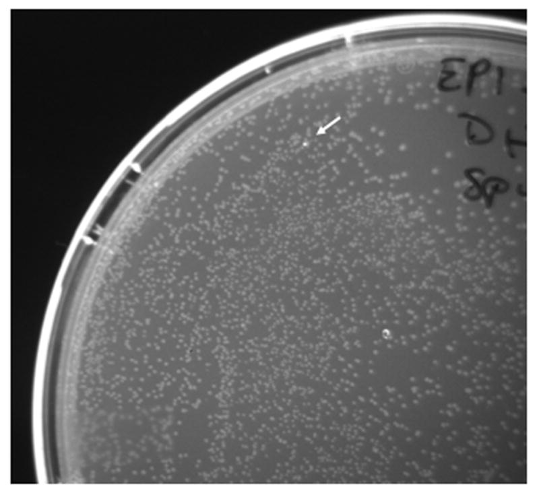FLUORESCENCE-BASED REPORTERS FOR MUTAGENESIS DETECTION IN E. COLI
Background
When model organisms are exposed to chemicals, resulting mutagenesis can provide insights on the chemical’s genotoxicity, which is an indicator of the chemical’s potential to cause cancer or birth defects. In fact, direct mutagenesis assays in bacteria are one of the three assays required by regulatory agencies for demonstrating the safety of potential clinical compounds. Mutagenesis assays are also used to study various DNA processes, such as replication, repair, damage tolerization, and homeostasis.
Technology Description
Researchers at UC Santa Cruz have developed methods for detecting mutagenesis in Escherichia coli (E. coli), using reporter systems that can detect and quantify point mutations. The plasmid-based reporter system couples a TEM-1 β-lactamase marker and GFP fluorescent marker. Either marker can be mutated, and a reversion of a mutation indicates that a compound is mutagenic.
There are several benefits to coupling the markers. The reporters produce a quantitative output and allow for monitoring growth over time.

Applications
- clinical safety testing
- genotoxicity studies
Advantages
- less labor-intensive mutagenesis assays
- reduces amount of test compounds needed for mutagenesis assays
- provides quantitative detection
Intellectual Property Information
| Country | Type | Number | Dated | Case |
| United States Of America | Issued Patent | 11,788,113 | 10/17/2023 | 2017-264 |
| United States Of America | Issued Patent | 11,339,420 | 05/24/2022 | 2017-264 |
Related Materials
Contact
- Jeff M. Jackson
- jjackso6@ucsc.edu
- tel: View Phone Number.
Other Information
Keywords
Mutagenesis detection, Bacteria, E. coli, Environmental toxicity, Toxic compound detection, Quantitative mutagenesis, Fluorescent marker
